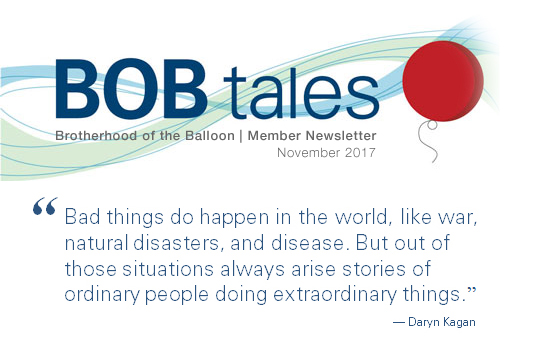
Dear Members:
We live in difficult and challenging times. In last month’s opening memo, Deb commented on the horrific devastation resulting from recent hurricanes. And just when you think things couldn’t get any worse, we have mass shootings in Las Vegas. As I write these words, that event is still fresh news and the media are reporting at least 59 killed and 530 injured. The death toll will undoubtedly rise from this terrible tragedy. As with all tragic events, natural and man-made, there are many stories of heroic acts by people in harm’s way, by first responders and others who have stepped in to help those affected. Our prayers and heartfelt condolences go out to the victims of these tragedies as well as their family members.
Year-end Giving
November is the month of Thanksgiving. Despite some of the dreadful things going on in this world, most of us have much to be thankful for—family, friends, health, faith, a roof over our heads, food on the table, and a wonderful country in which to live. Thanksgiving is a wonderful time to acknowledge all we have.
Each month Deb and I receive a list of names of those who have contributed to the Robert J. Marckini Chair for Proton Therapy Research. We don’t know the amounts, but we do know who is making gifts. We do our best to acknowledge all who contribute. Members typically tell us their donation is an acknowledgement for the gift of healing they have received as a result of their proton therapy. For many, it’s just a way to say “thank you.” Some make gifts on a monthly basis. No matter how small the gift, I assure you, it will make a difference. Past proton therapy research is what made our treatment possible. With your help, current and future research will help improve proton therapy for others. There is essentially no part of the body that the proton beam can’t reach. And with proper funding, proton research will allow the beam to treat and cure more and more cancers in adults and children.
Vision 2020 at Loma Linda Health is a massive $1.4 billion effort to build a new adult hospital, expand the Children’s Hospital, modernize the eight schools of the university, and fund transformational healthcare research. LLUH is less than $80 million from their fund-raising target. With our help they will achieve that goal.
As you plan your year-end giving, I hope you will consider a contribution to either the Marckini Chair or Vision 2020. Information on how to do this is in this newsletter. Or contact Deb Hickey.
This Month’s BOB Tales
Two pieces in particular are especially important in this issue. If you read nothing more than the articles on NSAIDs lowering prostate cancer risk and the dangers of sugar, you will receive great value from this newsletter.
My book, You Can Beat Prostate Cancer, is still in the No. 3 spot in Amazon’s results on a search on “prostate cancer.” That means newly diagnosed men are learning that surgery is not the only way to treat prostate cancer. One reader wrote to us and said:
I almost passed out when I learned I had prostate cancer. The next 12 days were the worst days of my life as I tried to focus and do some research. At first, all I ran across was the same options—surgery and various forms of radiation—all with the same complications and side effects. I was overwhelmed and depressed. I took pills to make myself sleep at night, but they always wore off around 2:30 a.m. and I’d lie awake agonizing in the darkness of my thoughts. My wife was overwhelmed and confused, too. One night, I came across a reference to Bob Marckini’s book and I downloaded it. As I read it and first learned about proton beam therapy, I became mesmerized. I also added to my knowledge of the various treatments and risks associated with each. This is a magnificent book because it has given me the gift of hope.
I was there once myself, and I set out to write a book that would both inform newly diagnosed men of their options and calm the stormy seas of fear and hopelessness. When I read messages like the one above, it makes me feel like I may have succeeded.
I how you enjoy this month’s BOB Tales. And please let us know how we are doing. Your feedback is important to us.
Bob Marckini
To print the BOB Tales newsletter or view the newsletter with a larger font size, click here for the PDF file.
In This Issue:
- Prostate Cancer Risk Lower in NSAID Users
- NAPT Appoints New Executive Director
- Immune Response Prognostic for Prostate Cancer Survival, Recurrence and Response to Radiation Therapy
- Urine Samples Could Help Predict Heart Attacks, Breast and Prostate Cancer
- “To Cut or Not to Cut”… That is the Question.
- The Dangers of Sugar
- Lower Prostate Cancer Risk with Food
.jpg)
Prostate Cancer Risk Lower in NSAID Users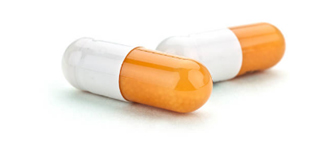
The use of NSAID drugs is associated with a decreased risk of prostate cancer, according to researchers. And the protective effect is more pronounced among men with a history of prostatitis.
Cancer Medicine journal reported that an analysis of data from the Epidemiology of Prostate Cancer case control study showed that men who use NSAIDs had a significant (23 percent) decreased risk of prostate cancer compared with men who never used NSAIDs.
Men who used NSAIDs that are COX-2 inhibitors (such as Celebrex) had a 52 percent decreased risk. And those who used non-aspirin NSAIDs had a 28 percent reduced risk of prostate cancer overall and a 51 percent decreased risk of high-grade prostate cancer.
Researchers concluded that this study “provides convincing evidence that frequent and chronic use of NSAIDs decreases the risk of prostate cancer, especially aggressive prostate cancer.” And the fact that the protection is magnified in men with a history of prostatitis provides additional evidence that targeting chronic inflammation may help prevent prostate cancer.
Can the use of NSAIDs help prevent a recurrence of prostate cancer after treatment? Or, can the use of NSAIDs slow the progression of recurrent prostate cancer? We suspect the answer to both of these questions is “yes,” and will continue to search the literature for definitive answers.
NAPT Appoints New Executive Director
The National Association for Proton Therapy is an independent, nonprofit corporation that promotes the therapeutic benefits of proton therapy for cancer treatment in the U.S. and abroad. NAPT was founded in 1990 with significant involvement and support from Loma Linda University Health.
Over the years, the NAPT has played a pivotal role in creating awareness of the benefits of proton therapy and supporting the development of new proton centers worldwide.
Len Arzt, a good friend of the BOB for the past 17 years, was NAPT’s first executive director. He served in that capacity for most of the past 27 years, helping to shape and shepherd the growth of proton therapy worldwide. The value of Len’s contributions is immeasurable.
.jpg) Last month, the NAPT executive committee announced that Scott Warwick has been chosen to become executive director, following a nationwide search. Scott is no stranger to proton therapy and cancer treatment. Much of his career has been concentrated in the fields of comprehensive cancer centers, radiation oncology operations and program development, including proton therapy. Most recently, Scott served as vice president of strategic initiatives and program development at Provision Healthcare in Tennessee having initially worked as the vice president of Clinical Operations for the Provision Proton Therapy Center.
Last month, the NAPT executive committee announced that Scott Warwick has been chosen to become executive director, following a nationwide search. Scott is no stranger to proton therapy and cancer treatment. Much of his career has been concentrated in the fields of comprehensive cancer centers, radiation oncology operations and program development, including proton therapy. Most recently, Scott served as vice president of strategic initiatives and program development at Provision Healthcare in Tennessee having initially worked as the vice president of Clinical Operations for the Provision Proton Therapy Center.
Deb and Bob have met with Scott on several occasions at annual National Proton Conference meetings. He, too, is a good friend of the BOB and we consider him the best candidate for the challenging and exciting road ahead at NAPT.
Immune Response Prognostic for Prostate Cancer Survival, Recurrence and Response to Radiation Therapy
A new study finds immune response in prostate cancer may be able to predict how patients will respond to radiation therapy, as well as their likelihood of disease recurrence and survival. More than 9,000 prostate tumors were analyzed as part of this study. Researchers found evidence that PD-L2 may provide a key route for targeted therapies, such as immunotherapy, to slow disease progression.
 Urine Samples Could Help Predict Heart Attacks, Breast and Prostate Cancer
Urine Samples Could Help Predict Heart Attacks, Breast and Prostate Cancer
A new study shows the majority of volunteers who donated a urine sample to the Oregon Institute of Science and Medicine had specific metabolic profiles for cardiac events, and breast and prostate cancer. The patterns appeared before the diseases’ subsequent symptoms and medical diagnoses.
The study, “Metabolic Profiling with Magnetic Resonance Mass Spectrometry and a Human Urine Bank: Profiles for Aging, Sex, Heart Disease, Breast Cancer and Prostate Cancer” was published in the Journal of American Physicians and Surgeons.
.gif)
We’ve been producing BOB Tales newsletters monthly for almost 17 years. During this time there have been important articles that many new members haven’t seen, and some older members may have forgotten. So, we decided to periodically re-run some articles from past newsletters. This one is from August 2003. The points made in this article from 14 years ago are still relevant and consistent with the “American Sickness” article we ran in last month’s BOB Tales:
“To Cut or Not to Cut” … That is the Question.
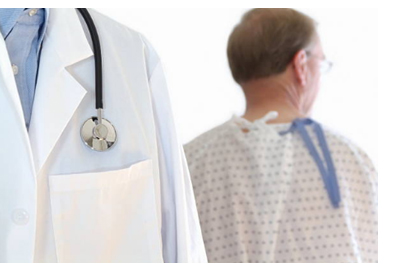 Several people brought to our attention a revealing article from the July 7, 2003 issue of Business Week, “To Cut or Not to Cut.” It is an excellent article packed with valuable information and excellent advice. We suspect our members are more educated than the average prostate cancer patient and therefore, much of the information presented is “old news” for us. Nevertheless, it’s good reading and could be helpful to relatives and friends who are struggling with a decision on whether or not to have elective surgery.
Several people brought to our attention a revealing article from the July 7, 2003 issue of Business Week, “To Cut or Not to Cut.” It is an excellent article packed with valuable information and excellent advice. We suspect our members are more educated than the average prostate cancer patient and therefore, much of the information presented is “old news” for us. Nevertheless, it’s good reading and could be helpful to relatives and friends who are struggling with a decision on whether or not to have elective surgery.
The article starts out: “Are surgeons too quick to put patients under the knife? That’s an important question for anyone considering a coronary bypass, hysterectomy, prostate removal, or a long list of other common elective operations. Studies released by Dartmouth College researchers show tremendous ‘unwarranted variations’ in the numbers of invasive procedures performed in the U.S. In other words, the likelihood of your having surgery depends more on the doctor you see, than whether you really need an operation. Avoiding unnecessary surgery requires a proactive patient willing to challenge opinions and research options. ‘One of the biggest problems with our healthcare system is that patients are way too passive,’ says Dr. Robert Brook, director of health policy research at the RAND Corp. Doctors have biases that may conflict with your best interest. A urologist is more inclined to recommend surgery for prostate cancer, while a radiotherapist is likely to tell you to have radiation.”
The article goes on to talk about how money seems to motivate certain treatment decisions, and, “it’s no coincidence that the most commonly performed procedures are also the most expensive.”
Next comes some good advice: “With this in mind, never accept one doctor’s word that you need an invasive procedure.” It further states, “Get a second, third, or even fourth opinion. Most insurance companies cover and encourage multiple consultations. Any doctor who takes offense that you want to seek another’s advice is not truly concerned for your welfare.”
More counsel: “You also want to educate yourself about your condition so you know your options and can question your doctor intelligently. Don’t rely on the ubiquitous pamphlets offered at medical offices which are essentially marketing brochures.”
Another wise piece of advice: “Make sure you obtain opinions from different kinds of relevant specialists, and don’t go to doctors who are professionally associated with the doctor you saw first. If possible, consult with doctors at the nearest teaching hospital. As academic institutions, they’re at the forefront of medical research. Also the doctors there are more often salaried rather than paid by the procedure, so they don’t have a financial interest in surgery.”
The article also lists 14 of the most “overdone surgeries,” and two of them have to do with the prostate: Surgery for Benign Prostatic Hyperplasia (BPH), and radical prostatectomy for early stage prostate cancer. No surprise to most of us.
Remember, discretionary surgery refers to OUR discretion, not the doctor’s discretion. The decision to choose any medical treatment should be an informed decision. We must ask the right questions, understand potential complications and side effects, and then choose the option that best suits each of us.
Regarding surgery, to quote the article, “The kindest cut of all may be no cut at all.”

Housed Proton Patients for Years
After the October newsletter was distributed, Deb Hickey received a nice message from BOB member Arlind Hackett of Highland, CA. Arlind wrote,
I’m always uplifted and energized by reading your newsletter. Thank you so much for all the effort you put into making it fun while providing so much useful information.
After a few back-and-forth emails, Deb learned Arlind worked for the Seventh-day Adventist Church for more than 40 years. Handling accounting and finance issues, he worked in many places including Singapore, Guam, Indiana, West Virginia, Maryland and Oregon. While working in Oregon, Arlind spoke with Dr. Lynn Martell, former director of special services at Loma Linda University Cancer Center, while he was conducting an audit. Dr. Martell was working at the Adventist headquarters in Hawaii where Arlind later accepted a position. The two reconnected a few years later in California when Arlind began working in Riverside for the Adventist church and Dr. Martell accepted a position at LLUCC. Interestingly, Arlind and his wife, Marleen, had moved to Loma Linda, which is close to Riverside.
When the holidays came around, Dr. Martell invited Arlind and Marleen to his home for Christmas dinner. Since they didn’t have family living close by, they accepted. When they arrived, they were seated at a card table for dinner in one of the Martell’s bedrooms. Arlind realized Dr. Martell had also invited all of LLUCC’s proton patients and their significant others to dinner (some had to eat in the bathroom).
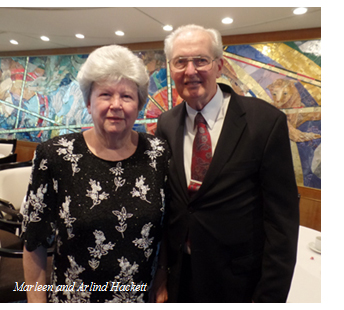 Arlind and Marleen sat with another couple—the man a proton patient at LLUCC. During their meal, the man mentioned a friend in Connecticut who had recently been diagnosed with prostate cancer. The man suggested his friend come to LLUCC for proton, but he couldn’t afford to rent an apartment for the duration of his treatment. Arlind gave his new friend his phone number, telling him that he and Marleen would rent the man a room for $75 a week. Not thinking much more about it, Arlind received a call a few weeks later—the man had chosen proton treatment at LLUCC and was looking for a place to stay.
Arlind and Marleen sat with another couple—the man a proton patient at LLUCC. During their meal, the man mentioned a friend in Connecticut who had recently been diagnosed with prostate cancer. The man suggested his friend come to LLUCC for proton, but he couldn’t afford to rent an apartment for the duration of his treatment. Arlind gave his new friend his phone number, telling him that he and Marleen would rent the man a room for $75 a week. Not thinking much more about it, Arlind received a call a few weeks later—the man had chosen proton treatment at LLUCC and was looking for a place to stay.
Arlind and Marleen opened their home to more proton patients and their significant others over the next several years. When they retired, they sold their home in Loma Linda and moved to a mobile home in Highland, about 10 miles away.
In 2015, Arlind was diagnosed with Gleason 8 prostate cancer. “There was no question about where I would receive treatment,” Arlind said. During his proton treatment at LLUCC, Arlind and Marleen enjoyed working out at the Drayson Center and attending “all the proton-related activities”—Wednesday night meetings, Tuesday potlucks, and Thursday night restaurant tours.
Arlind refers to his proton treatment as many others do—“a fabulous radiation vacation.” Today he feels well and his PSA is low.

Rebel with a Cause: Originator of Corporate Wellness Identifies Strategies for Maximum-Impact Giving
By Lynn McDowell, JD, CSPG, Planned Giving Officer, LLUH
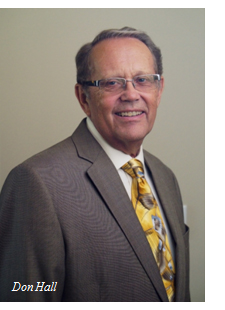 As a 12-year-old muscular dystrophy patient defying his doctor’s orders to eat meat, Don Hall, Doctor of Public Health in Preventive Medicine at LLUH, showed early signs of seeing beyond common practice. With an eye for important but overlooked connections, Don would soon make a positive impact on the health of millions through WellSource, his ground-breaking computerized health analysis program. By 1982, he was in TIME Magazine.
As a 12-year-old muscular dystrophy patient defying his doctor’s orders to eat meat, Don Hall, Doctor of Public Health in Preventive Medicine at LLUH, showed early signs of seeing beyond common practice. With an eye for important but overlooked connections, Don would soon make a positive impact on the health of millions through WellSource, his ground-breaking computerized health analysis program. By 1982, he was in TIME Magazine.
Attracting early corporate clients like Nike and Aramco, WellSource had its best year ever in 2016. At that time, Don turned his discerning eye to philanthropy. He wanted to make sure that the positive impact of his career and life-long passion—sharing the “secrets” of wellness—would continue for generations to come.
“I suppose it’s the rebel in me that wants to teach people how to take care of themselves rather than focusing on illness,” says Don. Keeping up with the latest health research, writing, and presenting seminars and workshops on wellness fill his semi-retirement while WellSource, with 35 full-time employees, “runs itself.” With the goal of “giving back,” Don began to investigate Planned Giving—a little-understood specialization of tax and charitable gift planning.
Planned Giving Philanthropy is the kind of niche that Don’s always felt good in—emerging but built on solid research, and potentially very powerful. The combination of expertise in the university’s Office of Planned Giving and the Adventist Health Study at the School of Public Health from which he graduated was, in Don’s estimation, the perfect pairing. The study was already making waves: “Blue Zones” research pin-pointed Loma Linda as one of 13 areas around the world where people were living exceptionally long and healthy lives—the only community in North America to meet Blue Zone criteria.
Once Don and his wife, Trish, decided on the legacy of an endowed chair—the Don and Trish Hall Research Professorship, which oversees the Adventist Health Study—they looked at the best way to fund it. In consultation with Loma Linda University Health’s Office of Planned Giving, the Halls settled on a couple of strategies: An annual IRA rollover gift, and gifts of stock.
Why an IRA Rollover?
An annual gift from his IRAs really appeals to the “supersaver” side of Don’s personality. Don finds this the most efficient way to finance his Vision 2020 cash pledge. “It’s much more economical to roll IRAs over to the school than to pay the tax,” he says. “It’s a big tax advantage to be able to work through the organization” because he’s contributing before tax dollars. His alma mater gets 100 percent of the draw paid by the IRA’s custodian at Don’s direction, and no tax is triggered.
Why Use Shares?
Gifts of shares provide several benefits. These include avoiding capital gains tax on appreciation when the stock itself is gifted (“in kind”) to a charity. A tax receipt is issued for the full present value of the stock. This can be used to offset other income and further reduce taxes. The key is to transfer the shares. Typically, the charity will immediately sell the stock and receive more than if the donor had sold the stock and given what was left after tax.
“Education is the best thing you can give a person,” says Dr. Don. He’s never stopped learning, and his decision to investigate—and use—Planned Giving is already making the outstanding outcomes he envisioned a reality.
To learn more about Planned Giving at LLUH, contact Todd Mekelburg at 909-558-5376 or write to [email protected].
A Special Lady—Still Giving
Connie Holland is a special lady. She is the wife of former BOB member Ed Holland who passed away in 2014 from lung cancer. For well over 10 years while Ed was a member of our organization, Connie and her beloved husband “gave back” in more ways than one because they were thankful for the proton therapy Ed received at Loma Linda University Cancer Center in 2001. Connie volunteered hundreds of hours to help us with our “Calling Campaign,” a former BOB-initiated project to sponsor and check in with BOB members who didn’t have access to computers and/or email. She was also the first volunteer to be listed on our “BOB Spouse” directory for significant others of newly diagnosed men to contact for support and guidance.
When Ed passed, we reached out to Connie to offer our condolences, prayers, and thanks for all she has done to support us. She wrote back:
I was always very happy to help out in any way I could as I felt proton had given us a chance for a very normal life and it did. We were very thankful during Ed’s last fight that we did not have any side effects from the proton treatments to deal with and his prostate cancer had never reappeared. I would still like to continue receiving the monthly newsletter as I will always preach proton to anyone who will listen.
We were informed that Connie made a contribution to proton research via the Robert J. Marckini Chair at Loma Linda University Cancer Center this summer. Deb reached out and asked her why, three years after Ed’s passing, she was still inclined to give to proton research. She said:
Why, as the widow of a proton alum, do I still donate to proton research at Loma Linda? My reason is simple—I too benefited from Ed’s proton experience. His proton therapy treatment was painless and gave him 14 years of life with no side effects. I was able to share that great quality of life with him. We filled those years with lots of travel and time with family and friends.
I will have to admit that there were some side effects from our time at Loma Linda—we had a wonderful vacation; we made lifelong friends from across the U.S.; we helped numerous men searching for treatment options by being on the calling list and I was happy to be a sponsor for about 50 BOB members over the years.
Loma Linda became an important chapter in our lives, one I want to continue.
We are overwhelmed with appreciation for all that Connie has done to support the BOB and proton research at LLUCC. She has made quite a difference in many lives. Bless you, Connie.
How to Give to Proton Therapy Research
- Donate Online: Visit the LLUCC website.
- Send a Check: Make your check out to “LLUCC Proton” with “Marckini Chair” on the memo line and send to: LLUH, Office of Philanthropy, P.O. Box 2000, Loma Linda, CA 92354.
- Make a Call: Contribute by phone. Contact Elvia DeHaro at 909-558-5010
- Make a Future Gift: Contact Todd Mekelburg at the Office of Planned Giving at Loma Linda University Health at 909-558-5376 or [email protected].
- Other Ways to Give: Contact Matt Miller at the Office of Philanthropy at Loma Linda University Health at 909-558-3582 or [email protected].
How to Give to Vision 2020
- Donate online: Visit the LLUH website.
- Send a check: Make it out to: “LLUH Vision 2020.” Mail to: LLUH, Office of Philanthropy, P.O. Box 2000, Loma Linda, CA 92354.
- Make a call: Call 909-651-2020.
- Make a future gift: Contact Todd Mekelburg at the Office of Planned Giving at Loma Linda University Health at 909-558-5376 or [email protected].
- Other ways to give: Contact Matt Miller at the Office of Philanthropy at Loma Linda University Health at 909-558-3582 or [email protected].

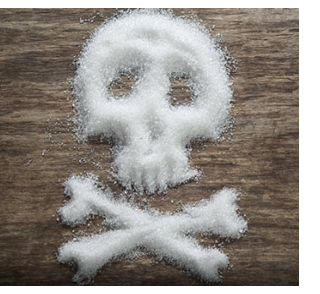 The Dangers of Sugar
The Dangers of Sugar
You may recall from our four-part series on the book, Anticancer: A New Way of Life, by David Servan-Schreiber, MD, that sugar has been identified as one of the major contributors to the increase in cancer diagnoses since WWII.
It’s hard to believe that something you have consumed every day of your life may be so deadly. Life Extension Magazine did a major article on this subject titled, “Not Fit for Human Consumption,” in their October 2017 issue and we have abstracted it here.
The Problem in Perspective
To put the subject in perspective, water contaminated by feces breeds bacteria like cholera, and cholera kills an estimated 95,000 annually. Cigarettes also kill thousands annually. Yet sugar may be killing more people than cholera and tobacco combined.
Life Extension (LE) states there is simply no reason to add sugar to food or drinks. This includes high-fructose corn syrup, high-fructose juices, sucrose, and starches that spike blood glucose levels. From a nutritional standpoint, there is no need to consume sugars or starches. It is true that glucose is essential to sustain life, but plenty of glucose is produced in our liver from protein and fats we eat.
The fact is, sugar consumption has been virtually zero throughout most of human history. But studies have shown that annual sugar consumption over the past 300 years has increased from about four pounds in 1700 to almost 150 pounds per person today.
Excess sugar consumption has been linked to obesity, cancer, vascular disorders, dementia, and type-2 diabetes. “It is time to classify sugar as a toxin analogous to tobacco, with harsh warning labels on high glycemic food/drink, along with restricted sales to children,” states LE.
Is Sugar a Carcinogen?
“The volume of data pointing to sugar as a probable carcinogen is frightening in light of today’s excess consumption of high glycemic food/drink,” according to LE.
LE advises cancer patients to stop all simple sugar consumption and cut back on glucose-spiking starches like rice, bread and other wheat/corn products. Excess glucose feeds rapidly dividing malignant cells according to four studies cited in the article. The resulting high insulin release promotes cancer cell proliferation. MD Anderson studies have shown that high sugar intake increases inflammatory pathways involved in cancer initiation and metastasis.
Is Sugar Addictive?
“An urgent need exists to enable typical people to lower their blood glucose and insulin levels,” says LE, “But studies have shown sugar to be addictive in a manner analogous to cocaine, according to one published report.
The Solution
The take-home message from this article is that sugar may not be fit for human consumption. The solution is to reduce your simple sugar intake to virtually zero, while cutting back on glucose spiking starches such as rice, white bread, potatoes and corn. Some believe that certain plant extracts taken as supplements may help reduce the impact of glucose-spiking calories.
Lower Prostate Cancer Risk with Food
Below are 10 healthful foods that can lower the risk of prostate cancer. Some may come as a surprise.
Garlic: Garlic contains sulfur compounds and stimulates the immune system’s natural defense against cancer. It also has the potential to reduce tumor growth.
Broccoli: Broccoli has special plant compounds that may protect the body from certain cancers, however studies have found if broccoli is microwaved, it destroys 97 percent of the cancer preventive flavonoids.
Blueberries: Blueberries are ranked number one in removing antioxidants and they neutralize free radicals that are unstable and damage cancerous cells. Blueberries are also high in antioxidants and low in glycemic index.
Brazil Nuts: Brazil nuts are the rich form of selenium with a trace of mineral that kills cancer cells and helps to repair their DNA. Around six to eight nuts contain more than 700 percent of the daily value for selenium, considered as one of the most significant minerals to fight prostate cancer.
Salmon: Eating fatty fish like salmon is likely to reduce risk of cancer as their key factor is omega-3 fatty acids and polyunsaturated fatty acids, which are known to ward off prostate cancer.
Kiwi Fruit: Kiwi contains vitamin C, vitamin E, lutein, and copper, which help fight prostate cancer.
Cherries: Cherries are a good source of the flavinoid quercetin. Due to its anti-oxidant, anti-tumor and anti-inflammatory activity, quercetin has been studied extensively as a chemoprevention agent in several cancer models.
Green Tea: The components of green tea, including polyphenols, may help prevent prostate cancer.
Pomegranate Juice: Researchers have found that drinking eight ounces of pomegranate juice daily slows down PSA progression.
Avocados: Avocados are one of the most healthful monounsaturated fats, which help to absorb anticancer oxidants from the body.
Fats are bad for you, right? Wrong.
Avoiding fat in your diet can cause dry skin and hair, constipation, insufficient absorption of fat-soluble vitamins A, D, E and K, low levels of reproductive hormones and excessive hunger, according to Leslie Bonci, RD, from Active Eating Advice in Pittsburgh. “Fat takes longer to leave the stomach so it helps you feel fuller for a longer period of time, and it stimulates production of neurotransmitters that help with satiety.”
All fats aren’t necessarily good for you. “Be selective about fats,” Bonci says. “If you prefer the taste of skim milk, go with it. But don’t shirk healthy fats in nuts, seeds, nut butters, avocado or olive oil. Your body needs them.”
Series: “Make Vegetables Taste Good”
This is the 14th segment on a subject that’s consistent with our Anticancer series. We made it our mission to find recipes that make the most healthful vegetables taste delicious. And, we’ve tried them all!
Baked Kale Chips
Deb grabbed this recipe from Loma Linda Health’s “Living Whole Recipes.” Kale is one of her favorite vegetables—Deb eats it for breakfast, lunch and dinner!
Recent research indicates that the phytonutrients in kale work at a deep level, signaling our genes to increase production of enzymes involved in detoxification, the cleansing process by which the body eliminates harmful compounds. The phytonutrients in kale have been gaining attention for their powerful effects in combating cancer as well as their beneficial effects on both heart and eye health.
Ingredients—Serves 8
- 1 large bunch kale (tough stems removed, leaves torn into pieces—about 16 cups)
- 1 tablespoon extra-virgin olive oil
- 1/8 teaspoon sea salt
Directions: Position racks in upper third and center of oven and preheat to 400°F. If kale is wet, pat completely dry with a clean kitchen towel. Transfer to a large bowl. Drizzle kale with oil and sprinkle with sea salt. Using your hands, massage the oil and salt onto the kale leaves to evenly coat. Fill two large rimmed baking sheets with a layer of kale, making sure the leaves don’t overlap. Bake until most of the leaves are crisp, switching the pans back to front and top to bottom halfway through—8 - 12 minutes total (start checking at 8 minutes to prevent burning).

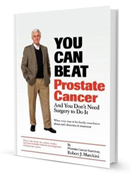
The Gift of Hope
As mentioned in this month’s opening memo, Bob Marckini’s book, You Can Beat Prostate Cancer, still shows up in the No. 3 spot on a search for “prostate cancer” in Amazon. Newly diagnosed men are learning that surgery is not the only treatment for prostate cancer; tens of thousands of books are in readers’ hands; 11 proton centers distribute it to prospective patients; and it’s changing people’s lives every day. Some recent Amazon reviews are below.
 Total Information
Total Information
Most informative book I've pick up on prostate cancer. Buy it! —Pen Name, 8/6/17
 Terrific Overview of Options for Prostate Cancer Treatment
Terrific Overview of Options for Prostate Cancer Treatment
This is a terrific overview of options for prostate cancer treatment. It is clearly geared toward the option of proton beam therapy, but it explains the other options along the way. It is well researched while at the same time is experiential. I chose proton beam therapy, which treated my prostate cancer with no collateral damage. —Trumpet 7, 9/7/17
 Good Introduction to the Nature of the Disease
Good Introduction to the Nature of the Disease
The author makes a good effort to be objective while supporting one therapy that worked in his case—strong and accurate message to “be your own advocate.” —James Brown, 9/19/17
If you found Bob’s book helpful in your journey to proton therapy, please help others find it by posting a review on Amazon. Click on the “Write a Review” button.
You Can Beat Prostate Cancer: And You Don’t Need Surgery To Do It
Buy Online, in Bulk or in Spanish
Online: Paperback: $19.00--•--Kindle: $9.99--•--NOOK Book: $9.99--•--Apple iBook: $9.99
In Bulk: Conctact us for a discount price list. Proceeds from book sales support proton therapy research through the Robert J. Marckini Endowed Chair at LLUCC.
In Spanish: Buy the print version or in eBook format.

Identity Theft
BOB member Bernie Picchi is Managing Director of Palisade Capital. In response to the recent data break-in at Equifax, he sent the following message to his clients. The advice is excellent and timely. We are reproducing it here with Bernie’s permission.
For all online portals that you may use:
- NEVER use your Social Security number as your login or password.
- Boost login protection by selecting security questions, if offered. Make your answers easy enough for you to remember, but hard for anyone else to guess.
- If offered, consider using multi-layer authentication, which utilizes a unique access code in addition to your username and password. This additional layer of authentication can prevent unauthorized access even if your login credentials are compromised.
Take precautions on your home computer and mobile devices:
- Keep your system and applications updated with the latest patches and releases. Most major software companies regularly release updates or patches to their operating systems to repair security problems.
- If using a wireless network at home, make sure to add a unique passcode so that only authorized persons are using your network. You can also contact your wireless software vendor about stronger encryption options.
- Always activate a PIN or lock function for your mobile device.
- Be careful when downloading apps or software, as they may contain malware designed to steal your personal and financial information. Review permissions at the time of installation to determine whether you are comfortable granting access that may be requested by the particular application.
Monitor all your accounts at various financial institutions:
- Review statements monthly and keep an eye out for changes that were not initiated by you. If you spot something, report it immediately.
- Set up transaction alerts, if available. These alerts can often be configured to notify you in the event of specified transactions in your account.
- Request credit reports to determine if there has been a change in your credit rating or a request for new credit (which can be an indication that someone stole your identity or tampered with your accounts). Consider engaging a credit monitoring service. Federal law provides free credit reports from three credit bureaus.
- If you receive paper statements, consider shredding them instead of disposing in the recycling bin.
- Keep all contact information updated to ensure that sensitive information is not sent to a previous address. Providing your current phone number and email address will help the institution contact you quickly if necessary.
Be cautious about emails:
- Cyber criminals may try to gain your personal information through numerous deceptive means such as legitimate-looking emails with fake web links, phone numbers, and attachments. Avoid opening links or attachments in an email you are not expecting. Phishing emails will often ask you for personal information in an effort to obtain access to your financial assets and identity. Responding with sensitive information (like account numbers, passwords or Social Security numbers) is never a good idea.
- If you are concerned that an email may be fraudulent, or if you want to confirm that a particular email is really from the purported sender, call the sender of the email.

Last Month’s Brain Teaser
If you have me, you want to share me. If you share me, you haven’t got me. What am I?
Answer: A secret
Winner: Congratulations to David Brunk of Oro Valley, AZ, the October brain teaser winner! David is a new BOB member, treated with proton therapy for his prostate cancer earlier this year at Loma Linda University Cancer Center. Since his “graduation,” he is a huge proponent of proton therapy and LLUCC and uses his Facebook page to share his experiences and build awareness about protons for prostate cancer. An excerpt from a recent post is below:
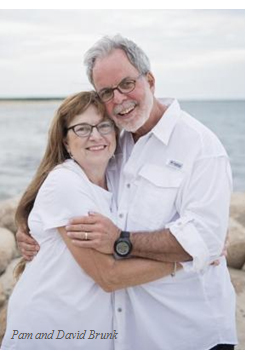 Aside from some fatigue I experienced after arriving at our Colorado summer home (much of which I attribute to living at 9,000 feet elevation) after proton treatment, I’ve been fit and healthy. Everything is working marvelously.
Aside from some fatigue I experienced after arriving at our Colorado summer home (much of which I attribute to living at 9,000 feet elevation) after proton treatment, I’ve been fit and healthy. Everything is working marvelously.
Most days, I walk or hike five miles or more; work out at the gym; follow my whole food, plant-based diet; and get plenty of rest.
… As many of you know I spent a lot of time reading, researching, and interviewing prostate cancer survivors prior to choosing proton beam therapy … I will tell you from my daily reading of the Team Inspire Forum that there are long and heartrending threads where men like you and me anonymously pour out their hearts and souls as they discuss the results and disappointments of their radical prostatectomy … learning to live a life devoid of normal functions …
One more thing—look to be treated and healed at an institution whose goal is not to just core out your prostate, but to make man whole and continue the healing ministry of Jesus Christ—Loma Linda University Cancer Center in Loma Linda, CA.
With prayers for all of us who’ve been touched by prostate cancer, regardless of the treatment modality you chose … be circumspect; be informed. God Bless.
New Brain Teaser
A wise man is lost in the desert with no water. He encounters a wise guy who is drinking from a jug. Seeing the wise man approach, the wise guy corks the jug.
“May I have some of your water, please?” The wise man asks. “I am dying of thirst.”
The wise guy replies, “Yes, but only if you agree to three conditions: 1) You must not remove the cork from the jug; 2) You must not break up the cork or make a hole in it; and 3) You must not damage the jug or make a hole in it.”
The wise man agrees and has a satisfying drink of water.
How does he do it?
Send your answer to [email protected] for a chance to win a signed copy of Bob Marckini’s book, You Can Beat Prostate Cancer.

Two Wolves
An elder Cherokee American Indian was teaching his grandchildren about life.
He said to them, “A fight is going on inside me. It’s a terrible fight and it’s between two wolves. One wolf represents fear, anger, envy, sorrow, regret, greed, arrogance, self-pity, guilt, resentment, inferiority, lies, false pride, superiority, and ego. The other stands for joy, peace, love, hope, sharing, serenity, humility, kindness, benevolence, friendship, empathy, generosity, truth, compassion, and faith. This same fight is going on inside you, and inside every other person, too.”
The children thought for a minute and then one asked his grandfather, “Which wolf will win?”
The old Cherokee replied, “The one you feed.”
Low PSAs to all,
Bob Marckini and Deb Hickey
To print the BOB Tales newsletter or view the newsletter with a larger font size, click here for the PDF file.
NO MEDICAL ADVICE: Material appearing here represents opinions offered by non-medically-trained laypersons. Comments shown here should NEVER be interpreted as specific medical advice and must be used only as background information when consulting with a qualified medical professional.
